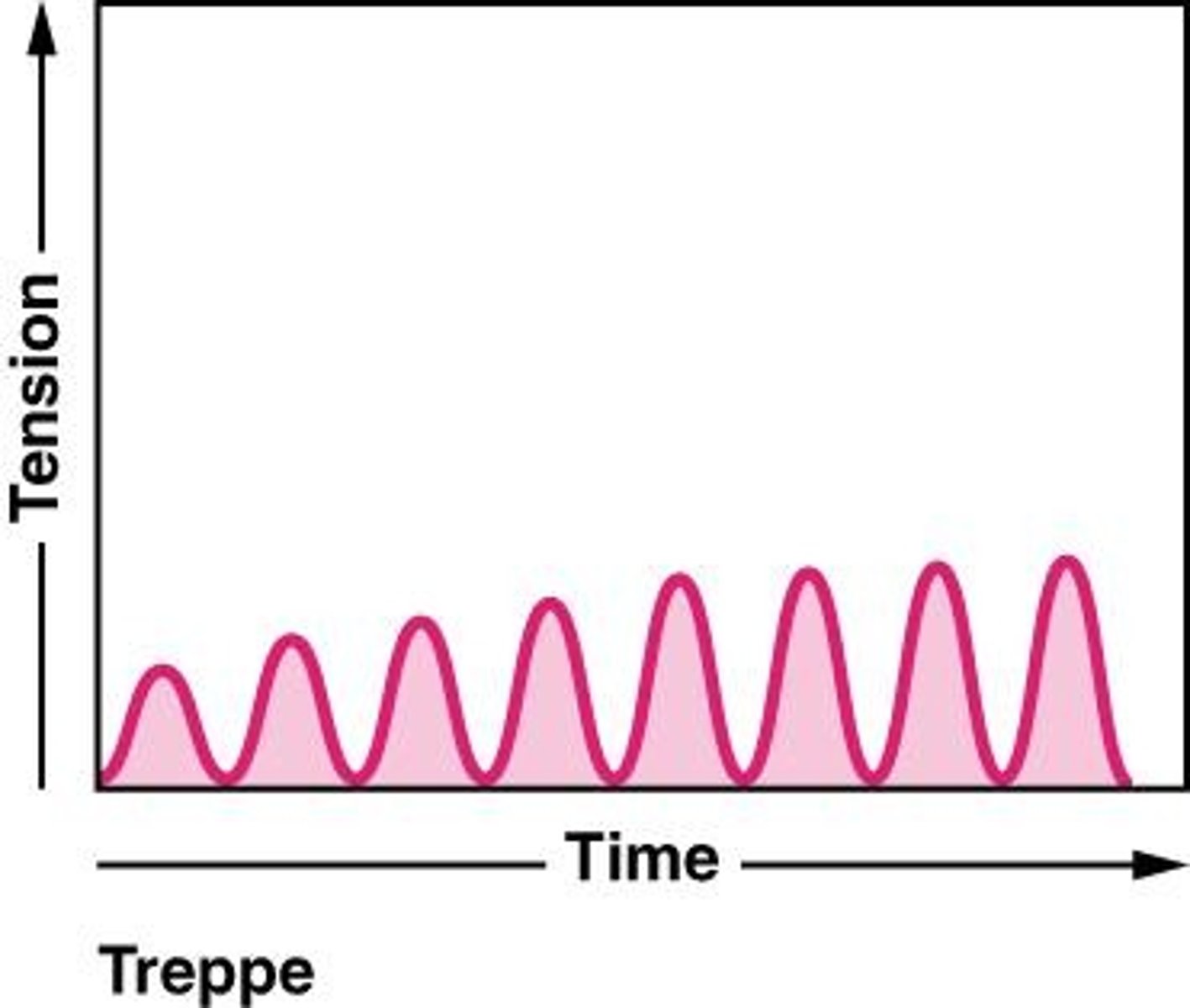Muscle Tissue Types, Structure, and Physiology: A&P Chapter 10
1/49
There's no tags or description
Looks like no tags are added yet.
Name | Mastery | Learn | Test | Matching | Spaced |
|---|
No study sessions yet.
50 Terms
Excitability
The ability of plasma membranes to change electrical states (respond to a stimulus).
Elasticity
The ability of muscle to return to its original length when relaxed.
Extensibility
Muscle can stretch or extend.
Contractility
The ability of muscle to shorten and pull on attachment points with force.
Skeletal Muscle
Is attached to the skeleton, is striated, and is controlled voluntarily.
Smooth Muscle
Mostly located in the walls of hollow organs, is not striated, and is controlled involuntarily.
Cardiac Muscle
Forms the heart, is striated, and is controlled involuntarily.
Epimysium
Most superficial sheath that covers entire muscle, made of dense irregular connective tissue.
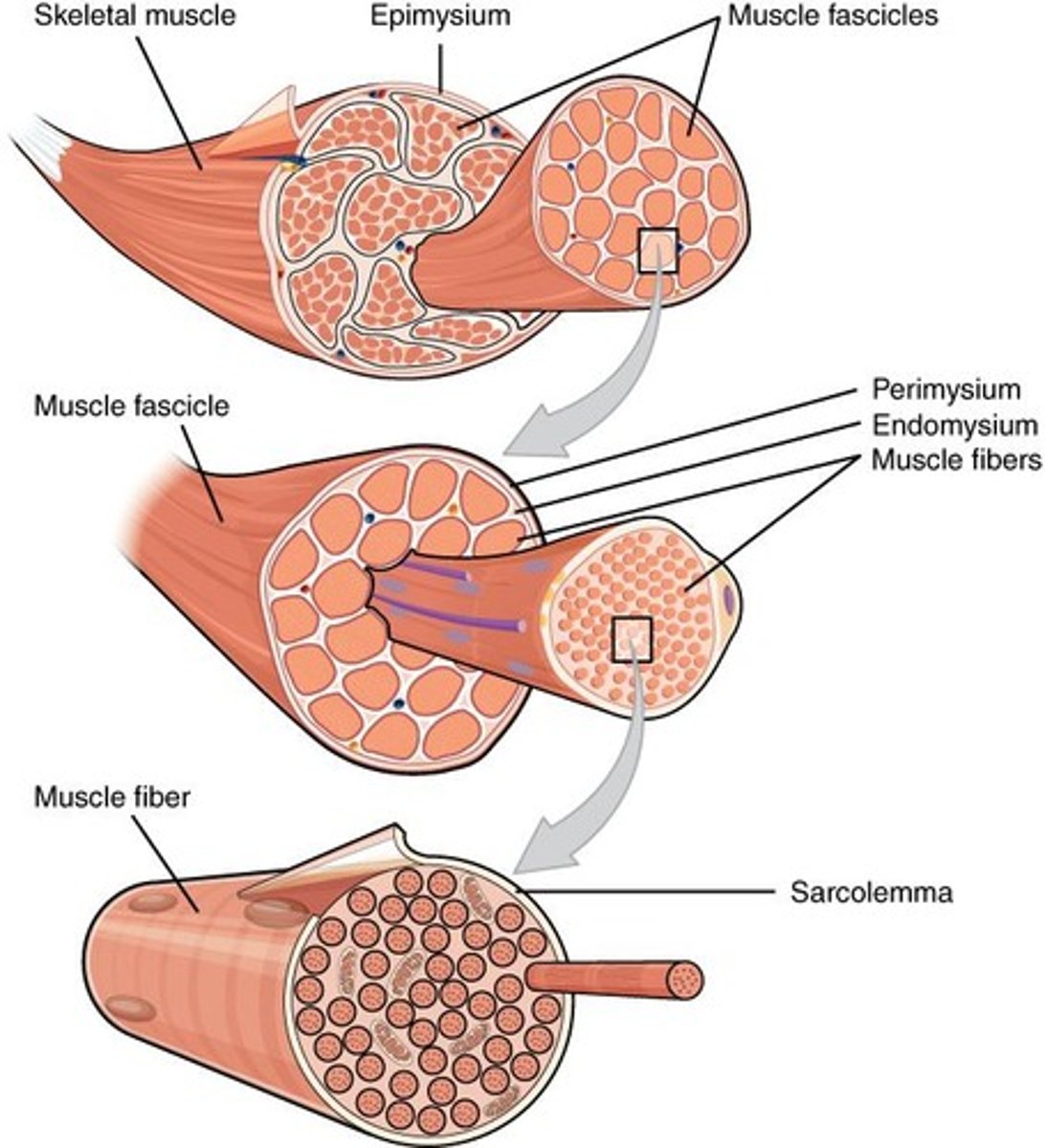
Perimysium
Surrounds the fascicles or bundles of muscle fibers (cells).
Endomysium
Connective tissue that surrounds each individual muscle fiber.
Plasma membrane
Also known as sarcolemma.
Cytoplasm
Also known as sarcoplasm.
Smooth endoplasmic reticulum
Also known as sarcoplasmic reticulum (SR).
Thin filament
Actin.
Thick filament
Myosin.
Sarcomere
Functional unit of muscle made of actin and myosin (myofilaments) and regulatory proteins troponin and tropomyosin.
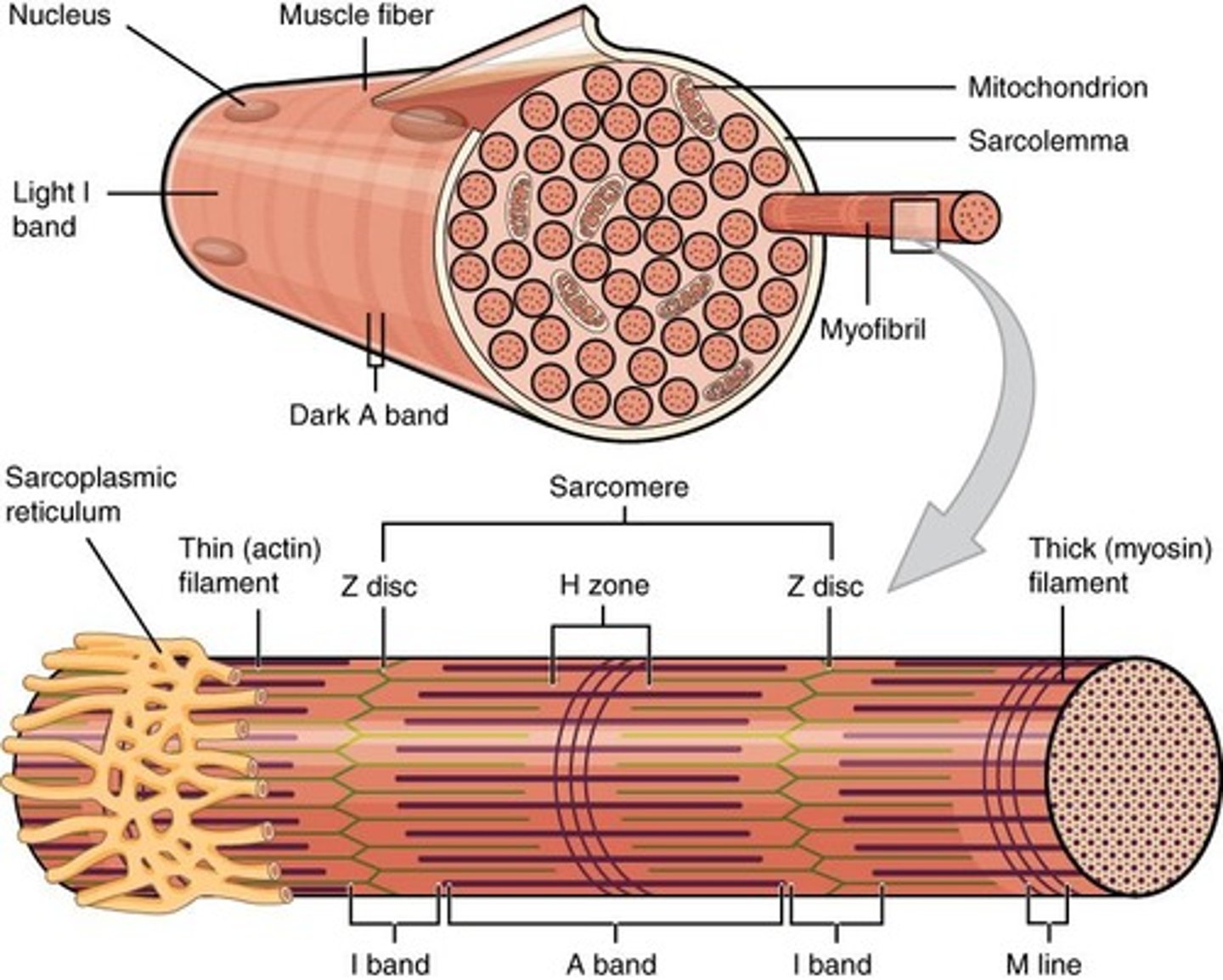
Z disc
Anchors actin myofilaments.
Actin
Thin filaments.
Myosin
Thick filaments.
I band
Actin only.
A band
Entire length of myosin plus overlapping parts of actin.
H zone
Light zone in midsection of A band that contains myosin only (visible in relaxed muscle fiber).
M line
Dark vertical line in H zone that anchors myosin.
Action potential (AP)
Travels along the motor neuron until it reaches the neuromuscular junction.
Acetylcholine (ACh)
A neurotransmitter released into the synaptic cleft.
Excitation-Contraction Coupling
AP moves by depolarization along sarcolemma down T-tubules to the interior of the cell where the membrane can then be in contact with sarcoplasmic reticulum (SR).
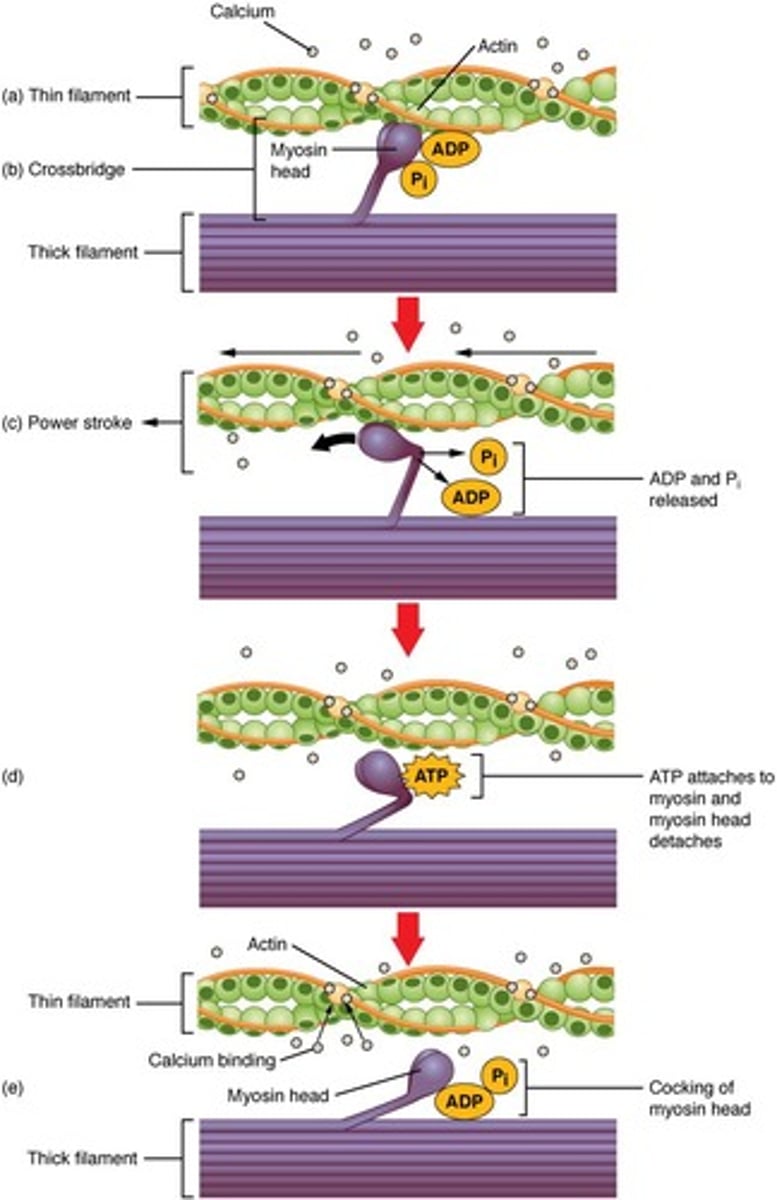
Triad
Made of two SR on either side of a T-tubule.
Calcium (Ca++)
Triggers the release from the SR and binds to troponin starting the contraction process.
Tropomyosin
A protein that blocks myosin-binding sites on actin.
Troponin-tropomyosin complex
Formed when tropomyosin and troponin bind together.
Ca++
Binds to troponin which then pulls tropomyosin away from the myosin-binding sites on actin.
Thin filaments
Are pulled along thick filaments toward the center of the sarcomere.
Myosin head
Can only pull actin a small distance before it must be detached and re-cocked, an action which requires ATP.
Muscle contraction end
Occurs when Ca++ is pumped back into the SR or there is no more ATP, resulting in relaxation.
Z lines
Move closer together during sarcomere contraction.
I bands
Become smaller during sarcomere contraction.
Creatine phosphate
In a resting muscle, ATP is converted to ADP and creatine phosphate; when energy is needed, it quickly transfers its phosphate to ADP creating ATP.

Glycolysis
Produces less ATP than creatine phosphate and creates lactic acid.
Aerobic respiration
In the presence of oxygen, this process produces 95% of the ATP needed by muscles and takes place in the mitochondria.
Isotonic contractions
The tension in a muscle stays constant and a load is moved.
Isometric contractions
The muscle produces tension but the load is not moved.
Motor Unit
The group of muscle fibers in a muscle innervated by a single motor neuron.
Recruitment
The increasing activation of motor units producing a stronger muscle contraction.
Muscle Twitch
One single contraction of all muscle fibers in a motor unit.
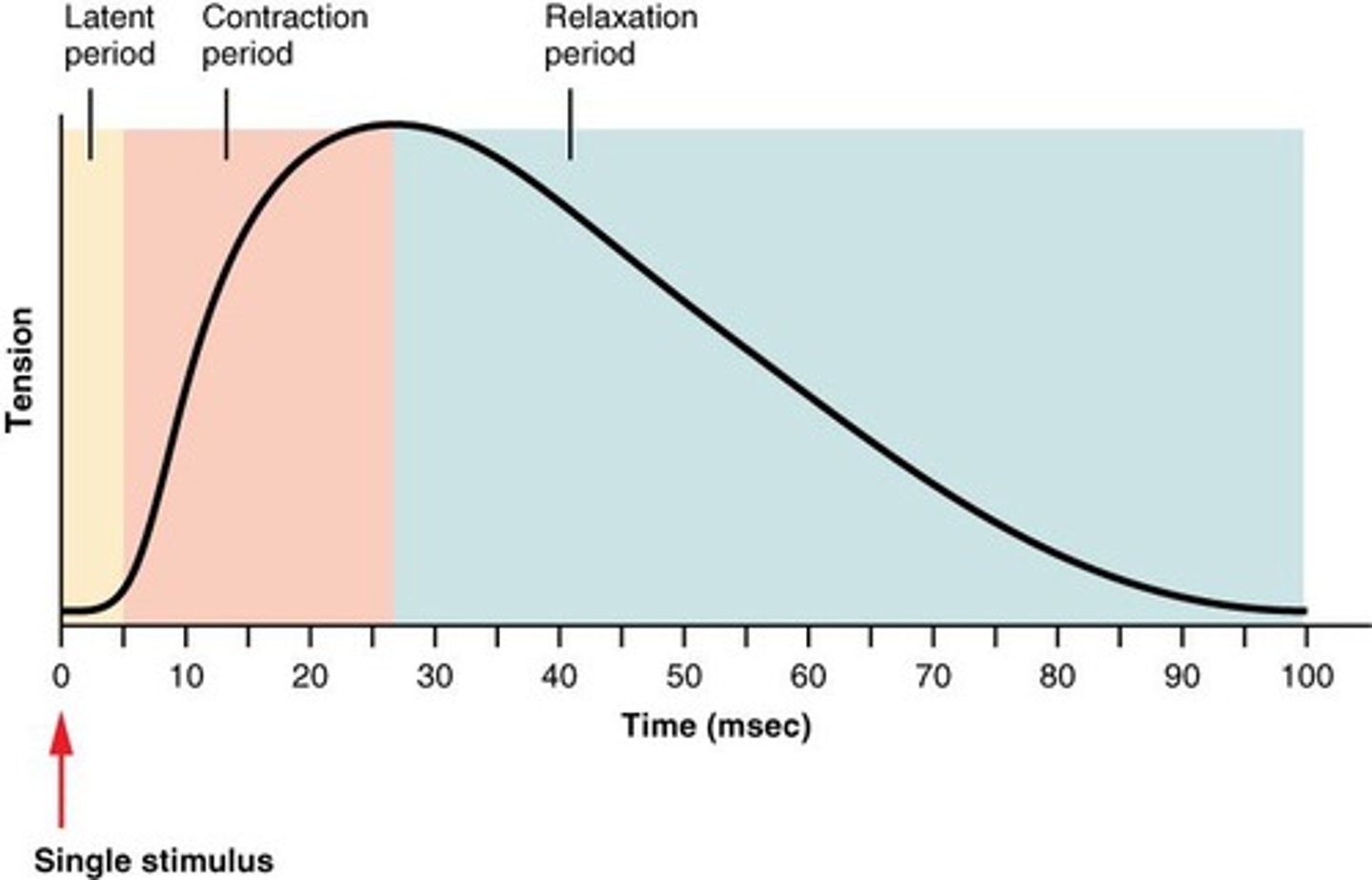
Latent period
AP is moving along sarcolemma and Ca++ are released from SR.
Contraction phase
Ca++ binds to troponin, cross-bridges form, and sarcomere shortens.
Relaxation phase
Ca++ ions are pumped out, cross-bridge cycling stops, and muscle returns to resting state.
Wave summation
Fibers are stimulated while a previous twitch is still occurring, making the second twitch stronger.

Tetanus
If the relaxation phase completely disappears, contractions become continuous resulting in tetanus.
Treppe
Occurs when a muscle fiber is stimulated immediately after the relaxation period ends, resulting in a slightly higher contraction than the previous maximum contraction.
